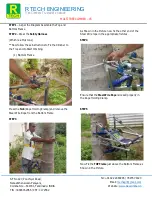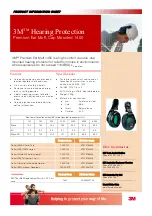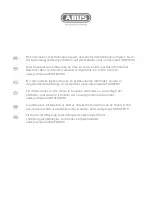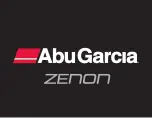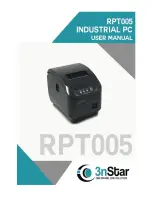
2- OR 3-JAW
PORTABLE PULLER
55 Ton Capacity Max.
NOTE:
●
These instructions must be read and carefully followed.
●
Carefully inspect the puller unit upon arrival. The carrier, not the manufacturer, is responsible for any
damage resulting from shipment.
SAFETY PRECAUTIONS
WARNING: To help prevent personal injury,
●
Never rely on this puller to support, carry, or transport the workpiece being
pulled.
●
The following procedures should only be performed by qualified, trained personnel who are familiar with
this equipment. Operators must read and understand all safety precautions and operating instructions
included with the puller, pump, and cylinder before using the puller.
●
The owner of the puller must see that it is installed and operated according to federal (OSHA), state, and
local safety standards.
●
Safety glasses must be worn at all times by the puller operator and anyone within sight of the puller.
Locate the puller in an isolated area or shield it to minimize danger to others.
●
It is impossible for the manufacturer to provide practical "all-purpose" shielding, because this is a
general purpose tool that can be used in many different applications. The owner of the puller must
fabricate shielding that is practical and necessary for a particular application. A certain degree of safety is
provided by wrapping the work in a Power Team protective blanket before applying pressure.
●
The owner of this tool must ensure that all safety-related decals are installed, maintained, and replaced if
they become hard to read.
●
Wear protective hearing gear whenever operating this puller. The decibel level is 90 dba at maximum
pressure.
●
This unit must be blocked or otherwise secured from accidental movement where the unit is operated on
an inclined plane.
HOSES
●
Should a hydraulic hose ever rupture, burst, or need to be disconnected, immediately shut off the pump
and shift the control valve twice to release all pressure. Never grasp a leaking pressurized hose with your
hands.
●
Do not subject the hose to potential hazard, such as fire, sharp surfaces, heavy impact, or extreme heat
or cold. Do not allow the hose to kink, twist, curl, or bend so tightly that the oil flow within the hose is
blocked or reduced. Periodically inspect the hose for wear, because any of these conditions can damage
the hose and possibly result in personal injury.
●
Do not use the hose to move attached equipment. Stress can damage the hose and possibly cause
personal injury.
●
Hose material and coupler seals must be compatible with the hydraulic fluid used. Hoses also must not
come in contact with corrosive materials such as creosote-impregnated objects and some paints. Consult
the manufacturer before painting a hose. Never paint a coupler. Hose deterioration due to toxic materials
can result in personal injury.
Form No. 102997
PH553C-E220
PH553C13-E220
PH553CL13-E220
Operating Instructions for:
Sheet No. 1 of 3
Rev. 3
Date: 18 April 06
© SPX Hydraulic Technologies








